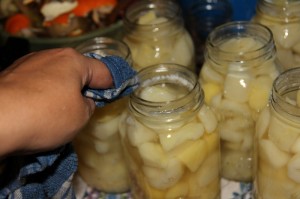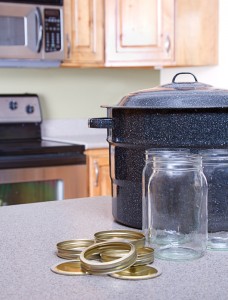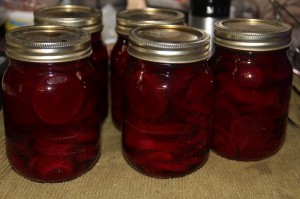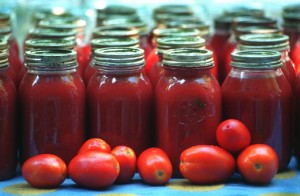Canning can be an incredibly rewarding process that is not only good for your budget but also pretty tasty. There’s just nothing like opening a can of strawberry jam in the dead of winter and reliving some of that summer goodness yet again.
But, canning is a very precise process and if done incorrectly, it can lead to all kinds of complications and illnesses including botulism. While it sounds pretty scary, there are a few things you can do to keep yourself and your family safe. Aside from following trusted recipes and recommended safety procedures, one of your best defenses is understanding why canned foods spoil and how to identify spoiled foods to mitigate any potential risks.
Why do canned foods spoil?
 The most common reason that foods will spoil is that the seal on the lid was not airtight. A few reasons that your jar might not have sealed include a faulty jar or lid, food particles on the rim of the jar or improper processing. Having jars not seal properly happens to everyone–even the most experienced canners–so don’t let it discourage you!
The most common reason that foods will spoil is that the seal on the lid was not airtight. A few reasons that your jar might not have sealed include a faulty jar or lid, food particles on the rim of the jar or improper processing. Having jars not seal properly happens to everyone–even the most experienced canners–so don’t let it discourage you!
If you suspect a jar did not seal right, you can test it once it has cooled. One method is to pressing the middle of the lid with your finger. If the lid pops up and down, it hasn’t sealed properly. Alternatively, you can just look at the jar. If the lid is flat or bulging it has not sealed. Properly sealed jars will have a slight concave shape to the lid.
Can you reprocess improperly sealed goods?
 Sometimes, when you’re canning it becomes readily apparent that something with a can isn’t right, or that a seal just didn’t take. If you catch the failed seal within the first 24 hours of canning, then you can simply reprocess the food in a new can with a new lid. Use the exact same processing time and procedure with the contents and make sure it seals properly this time. Alternatively, you can simply refrigerate the can and eat it right away. Just be sure you use it within a few days!
Sometimes, when you’re canning it becomes readily apparent that something with a can isn’t right, or that a seal just didn’t take. If you catch the failed seal within the first 24 hours of canning, then you can simply reprocess the food in a new can with a new lid. Use the exact same processing time and procedure with the contents and make sure it seals properly this time. Alternatively, you can simply refrigerate the can and eat it right away. Just be sure you use it within a few days!
Outside of the 24-hour period, if you notice the seal was not airtight then it’s probably best to assume that the food is no good and, sadly ought to be disposed.
Identifying Spoiled Goods
If you didn’t catch the non-airtight seal when you were canning, then you’ll probably have a sad surprise waiting for you a few months down the road. With most foods it will be pretty obvious that it is spoiled. However, some low-acid foods, like tomatoes, will probably not have many signs of spoilage. So, here are a few indications that the canned good is spoiled:
 Lid has an improper or failed seal
Lid has an improper or failed seal- Rising air bubbles (static bubbles are fine)
- Streaks of dried food originating at the top of the jar
- Contents have an unnatural color
- Contents have an unnatural odor
- Liquid spurts
- Food or top of lid is moldy (note this is different from the darkened deposit that is sometimes formed on properly sealed cans)
If you see any of these signs, then DO NOT taste the food. It might be spoiled or contaminated and should be thrown away. In the past, the USDA said it would be fine to remove the molded portion and eat the rest. This is no longer recommended, and I personally think it’s better to be safe than sorry.
But, once you have identified a spoiled can of food, what do you do with it? There are several recommended procedures to be sure that you and your family are not at risk of illness or contamination. Click here to read my article on how to properly dispose of spoiled canned good safely!


Leave a Reply